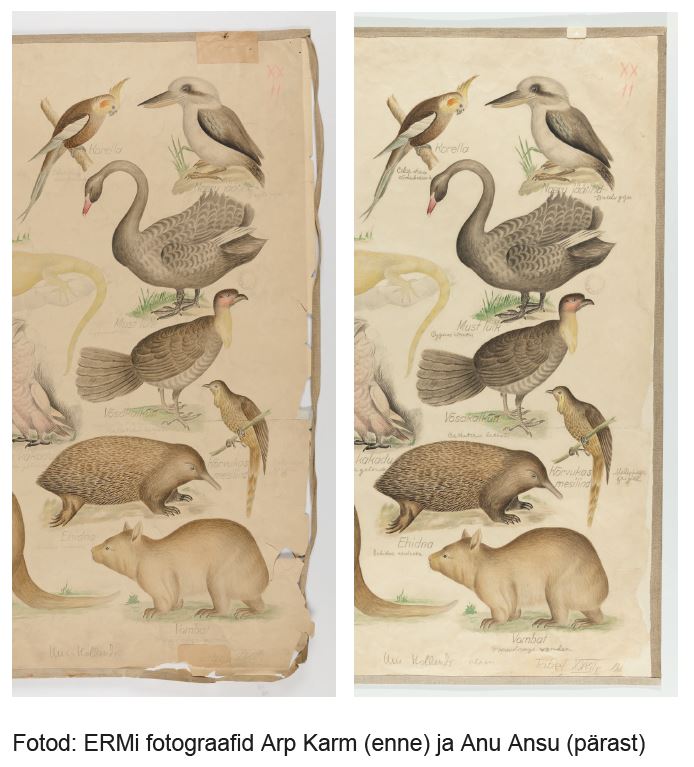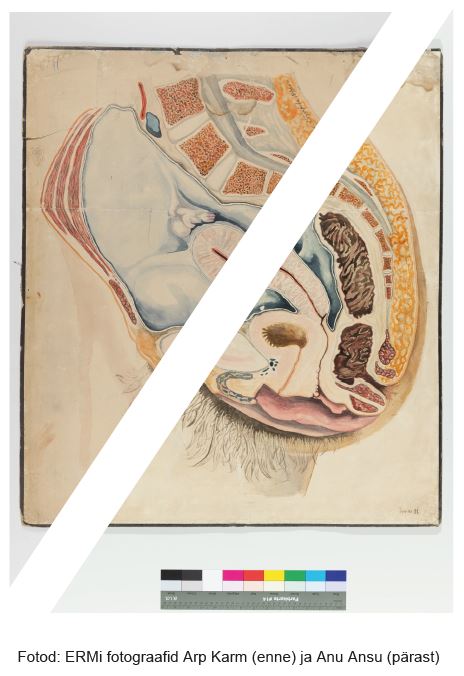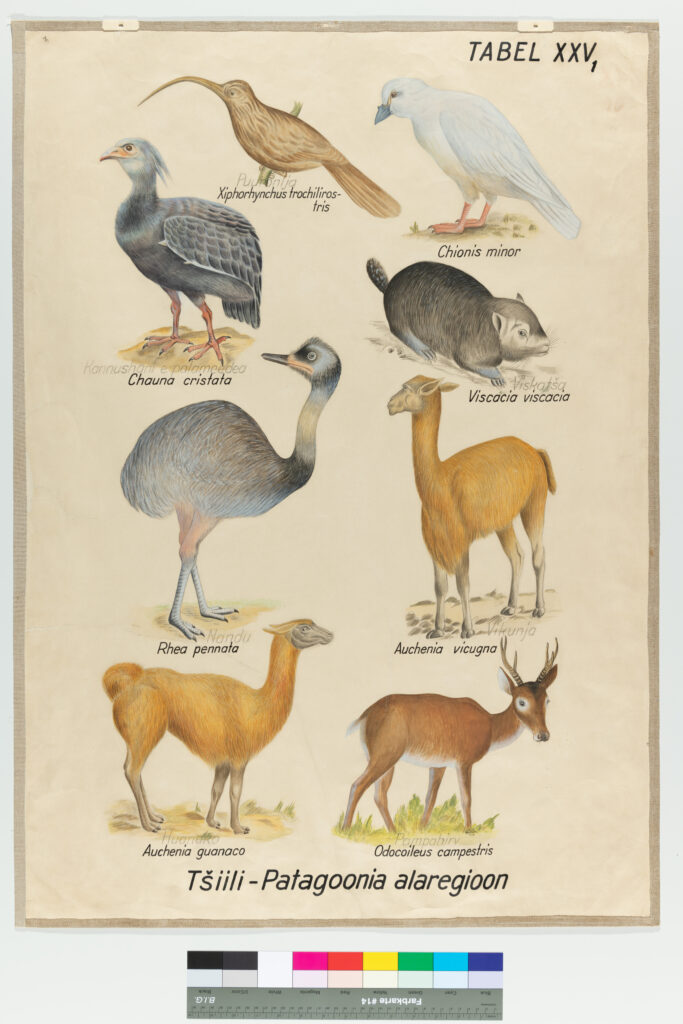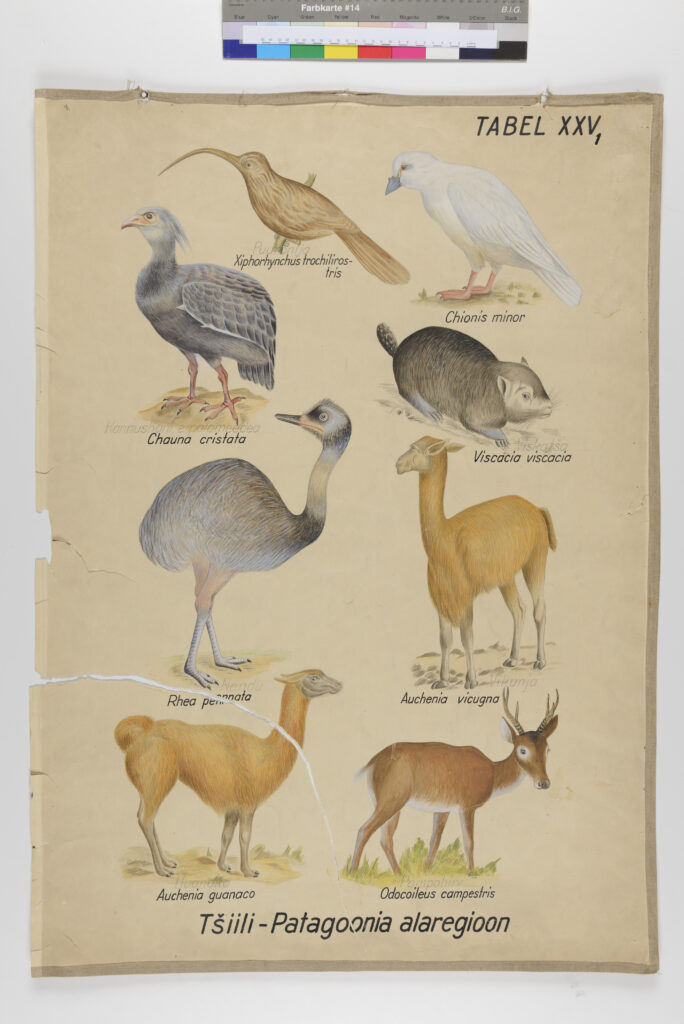Antud lõputöö kirjalik osa annab ülevaate Tartu Ülikooli muuseumi õppetahvlitest, neid valmistanud autoritest ja kirjeldab lühidalt autorite kokkupuudet Tartu Ülikooliga. Ühtlasi tuleb juttu Tartu Ülikoolis tegutsenud joonistuskoolist ning endiste tudengite meenutustest õppetahvlite pärinemisest ja ajaloost. Samuti kirjeldan põhjalikult õppetahvlite konserveerimisprotessi.
Lõputöö praktilises osas konserveerisin seitse Tartu Ülikooli muuseumis arvel olevat õppetahvlit, millele sai MuISi keskkonnas täidetud restaureerimispassid. Antud valikul lähtuti selle aasta novembris Kumu Kunstimuuseumis toimuva näituse “Kunst või teadus” kuraatorite välja valitud õppetahvlitest. Praktilise töö eesmärk on teostada vajalikud konserveerimistööd, taastada õppetahvlite algne väljanägemine ning peatada edasine kahjustumine. Konserveerimistööd teostasin Eesti Rahva Muuseumis. Lõputöö lisana on esitatud praktilist tööd kirjeldavad konserveerimisprotokollid ning ülesvõtted enne ja pärast Tartu Ülikooli muuseumi õppetahvlite konserveerimist.
Käesoleva lõputöö jaoks sain informatsiooni erinevatest digitaalsetest andmebaasidest, Tartu Ülikooli ajalugu puudutavast kirjandusest ning Tartu Ülikooli muuseumi töötajatelt, seoses eeloleva näituse “Kunst või teadus” ettevalmistuse ja info kogumisega.
The topic of the final thesis concerns the up to 150-year-old teaching boards of the University of Tartu, which mainly deal with anatomy, physiology, medicine, botany and zoology. The written part of the thesis gives an overview of the teaching boards of the University of Tartu Museum, their authors and the memories of the former students who worked at the University of Tartu about the origins and history of the teaching boards. In the practical part of the final thesis, seven teaching boards registered in the University of Tartu Museum were preserved in the Estonian National Museum. The choice was based on the teaching boards selected by the curators of the exhibition “Art or Science” at the Kumu Art Museum in November this year.
Teaching boards have been stored for a long time without a protective cover and tightly stacked on top of each other, which promotes the formation and persistence of a dusty environment and dirt. When stored in this way, friction between the surfaces also occurs, which in turn can damage the painted surfaces of the drawings. Due to the water-sensitive media, it is not possible to wash the boards, and care must be taken with any wet treatments. Therefore, their initial thorough surface cleaning is especially important. As a result of storage, long use and handling, there were many tears and paper losses on the boards that needed to be fixed and repaired. Boards needed a lot of time and dedication before being ready to hand over to the University of Tartu Museum. During preservation, their visual appearance was improved and further damage was stopped.












